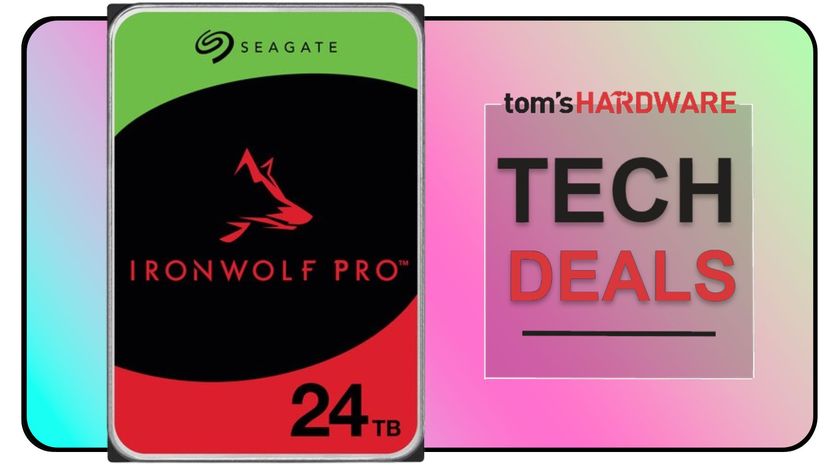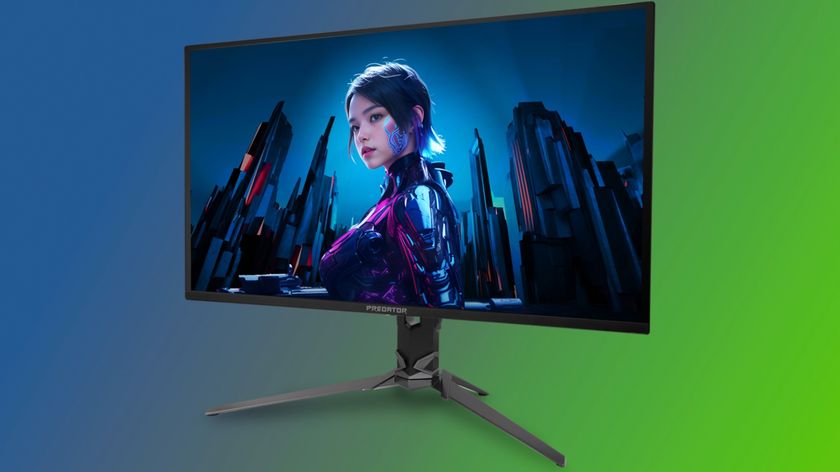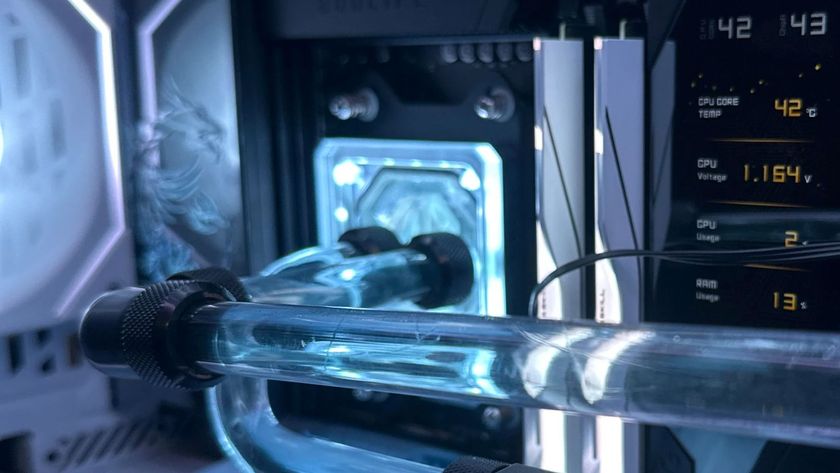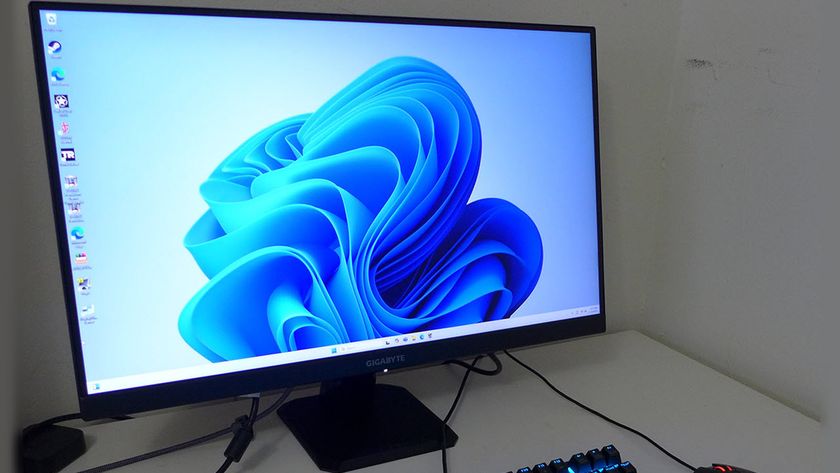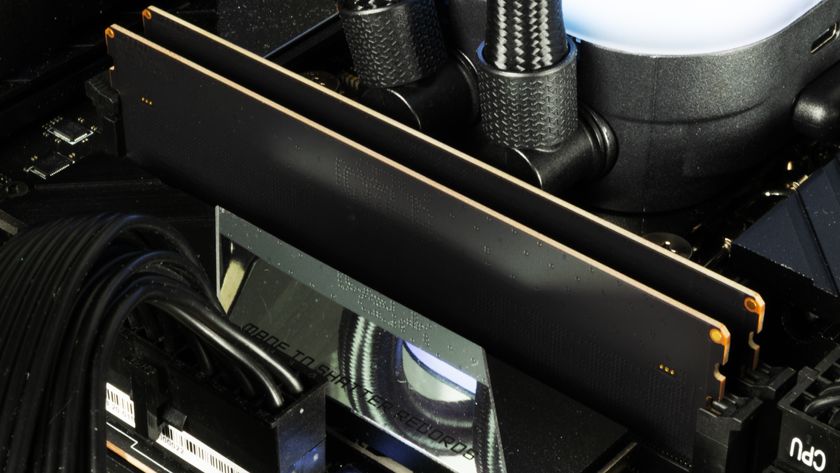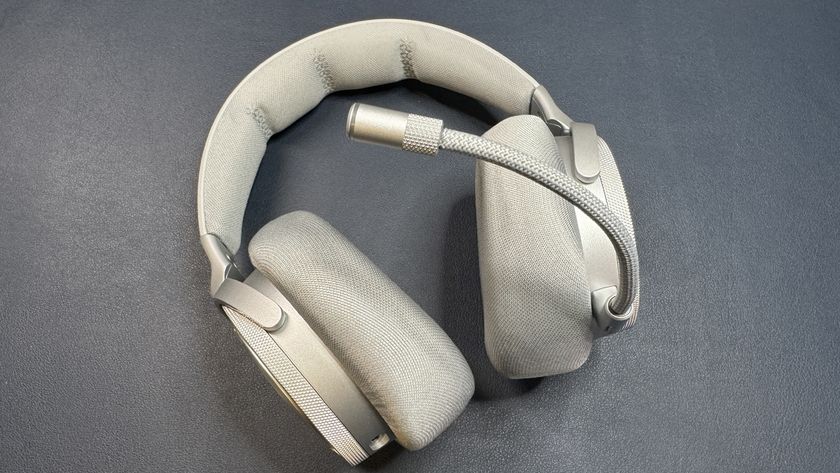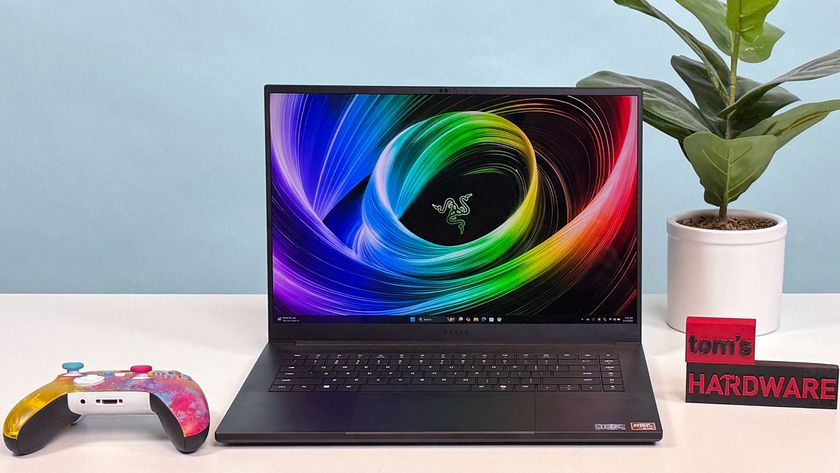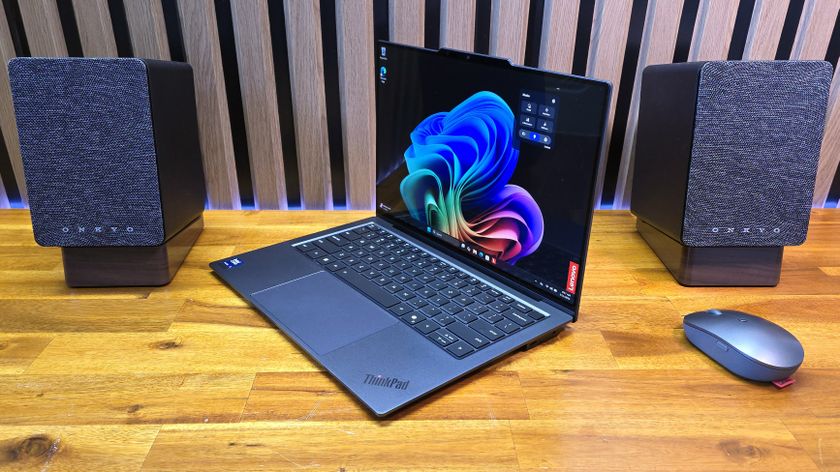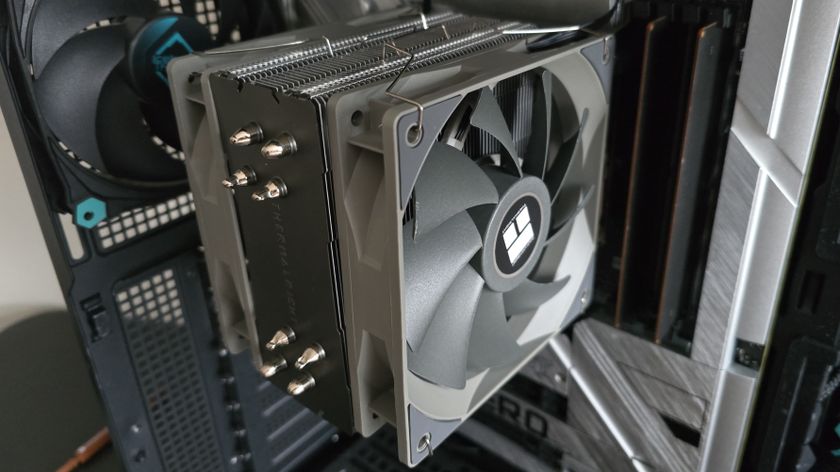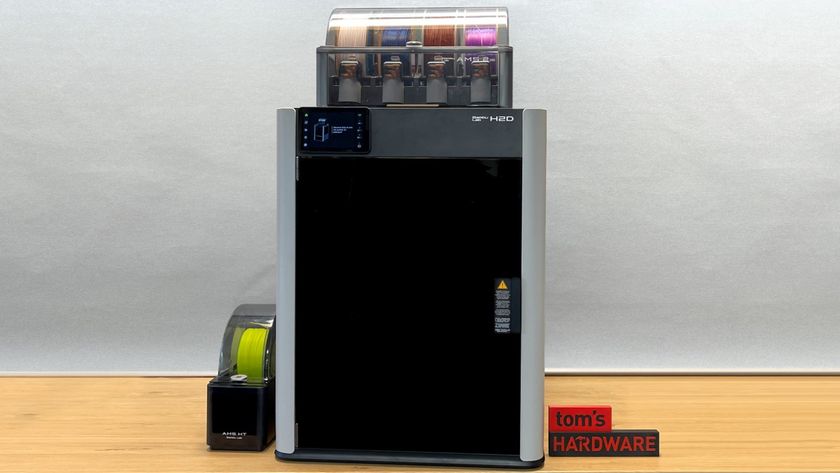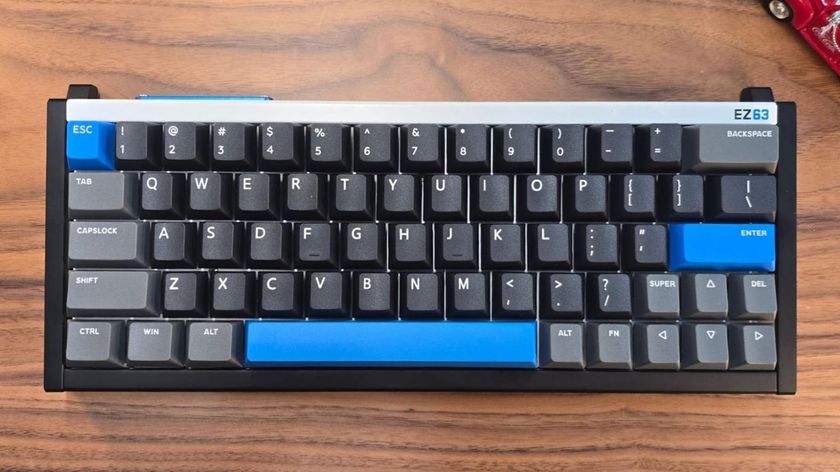Early Verdict
If you need Threadripper, you’ll know it. Heavy multitaskers, streamers, those who regularly use heavily threaded applications or have heavy PCIe requirements will all experience competitive performance. The recommendation comes with a caveat, though; if you’re looking strictly for the best gaming performance, you are better served with other alternatives.
Pros
- +
Workstation and productivity applications
- +
Price per core
- +
Solder
- +
Multi-Threaded performance
- +
PCIe connectivity
Cons
- -
Confusing settings
- -
Low resolution gaming performance
Why you can trust Tom's Hardware
Threadripper Makes An Entrance
AMD's 16C/32T Ryzen Threadripper is likely the biggest processor release of the year, quite literally. And that's saying a lot, given the company's rapid-fire releases addressing almost every facet of the desktop market. Now AMD is attacking Intel's high-end desktop stronghold with up to 60% more cores, 36% more PCIe lanes, and 68% more cache than the comparably-priced Skylake-X models. AMD also doesn't hack and slash at its product stack by culling I/O, so the company offers the same connectivity, even on its least-expensive models.
Impressively, all of the new Ryzen 7, 5, and 3 processors utilize the same underlying modular architecture. Threadripper is no exception, though it borrows some of AMD's EPYC data center DNA to take the design to the next level.
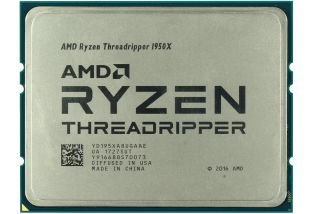
Four years ago, Dr. Lisa Su, now AMD's CEO, tasked her team with building a server processor that could compete with Intel's finest. That was an ambitious goal considering how far the company lagged behind its main competitor. AMD's Zen core, which is a clean-sheet design that provides a 52% IPC boost over the company's previous processors, was already underway and destined to power the new chips.
But processor design is a series of compromises. The company quickly learned that it couldn't construct a single monolithic die able to deliver on its performance, memory, and I/O goals. Instead, AMD's engineers put together modular four-core building blocks (CCXes) married in an eight-core die. And so, Zeppelin was born.
Now AMD uses the same Zeppelin building block in all of its processors. This approach is the epitome of maximizing limited resources; AMD can simply add more dies per package to create massively parallel chips, such as Threadripper and EPYC. Of course, there are trade-offs...
Though AMD faced significant headwinds at launch due to its unique Ryzen design, the complementary platform is much more mature, and game developers are doing better about leveraging the architecture's potential. AMD's efforts are paying off, too: Ryzen CPUs continue taking over our list of Best CPUs. Threadripper brings an entirely new set of challenges, but AMD has already designed in a few new features to help on the performance front.
Threadripper 1950X, 1920X & 1900X
It's important to understand Threadripper's intended audience. AMD geared the design for software developers, video/audio engineers, content creators, and heavy multi-taskers. Though Threadripper isn't aimed directly at gamers, particularly those who play at low resolutions with lightly-threaded titles, the company makes provisions for entertainment. The hefty core count should also boost gaming performance during intense streaming workloads, which we are currently testing for an upcoming feature.
The $1000 Ryzen Threadripper 1950X is the leader of AMD's high-end desktop portfolio with 16C/32T, while the smaller 12C/24T 1920X and 8C/16T 1900X round out the family. Much like the rest of its Ryzen line-up, AMD's Threadripper processors offer more cores than Intel at every price point. This time, however, we also get 64 PCIe 3.0 lanes (four of which are dedicated to the chipset) that outweigh Intel's 44-lane flagship Core i9-7980XE. And that chip isn't even available yet.
AMD includes all 64 lanes with each of its three Threadripper models, whereas Intel reduces connectivity for Skylake-X processors below $1000. Dual graphics cards are becoming more of a rarity in high-end gaming machines, but there are plenty of workloads still constrained by I/O. For instance, many taxing content creation workloads require hefty storage accommodations, and streamers often employ dedicated capture cards.
| Row 0 - Cell 0 | Threadripper 1950X | Core i9-7900X | Threadripper 1920X | Core i7-7820X | Threadripper 1900X |
| Price | $999 | $999 | $799 | $599 | $549 |
| Interface/Chipset | TR4 / X399 | LGA2066 / X299 | TR4 / X399 | LGA2066 / X299 | TR4 / X399 |
| Cores/Threads | 16/32 | 10/20 | 12/24 | 8/16 | 8/16 |
| TDP | 180W | 140W | 180W | 140W | 180W |
| Base Frequency (GHz) | 3.4 | 3.3 | 3.5 | 3.6 | 3.8 |
| Boost Frequency (GHz) | 4.0 (4.2 XFR) | 4.3 / 4.5 (TB 3.0) | 4.0 (4.2 XFR) | 4.3 / 4.5 (TB 3.0) | 4.0 (4.2 XFR) |
| L3 Cache (L2+L3) | 40 MB | 23.75 MB | 38 MB | 19MB | 20 MB |
| Memory Support | DDR4-2667 | DDR4-2666 | DDR4-2667 | DDR4-2666 | DDR4-2667 |
| Memory Controller | Quad-Channel | Quad-Channel | Quad-Channel | Quad-Channel | Quad-Channel |
| Unlocked Multiplier | Yes | Yes | Yes | Yes | Yes |
| PCIe Lanes | 64 | 44 | 64 | 28 | 64 |
The Threadripper 1950X offers a 3.4 GHz base frequency that boosts to 3.6 GHz during heavily-threaded workloads. Mainstream Ryzen models feature a dual-core Precision Boost during lightly-threaded tasks, but due to Threadripper's dual-die design (which we'll cover on the following page), that expands to a quad-core 4.2 GHz boost. Much like Intel's Skylake-X series, AMD offers unlocked multipliers for all Threadripper models, but improves overclocking frequency and voltage scaling by selecting the top 5% of Zeppelin dies. That should equate to lower voltage requirements compared to Ryzen 7 models.
Each Zeppelin die also sports 16MB of L3 cache, so the Threadripper 1950X wields a total of 32MB. That's a lot more than the 24.75MB Intel enables on its upcoming 18C/36T Core i9-7980XE. Focusing in closer on the $1000 price range, the 1950X provides 18.25MB more L3 cache than Core i9-7900X. Of course, cache latency and bandwidth can be much more important than capacity, so we'll have to measure each company's balance between size and speed.
AMD's dual-die architecture also comes with a 180W TDP rating, which is comparatively higher than Skylake-X's 165W ceiling. Of course, TDP doesn't map directly to power consumption during all workloads. AMD has an extensive set of power reduction features in its SenseMI suite that should help, and we'll present plenty our findings shortly.
Of course, a large 180W TDP processor is going to require a beefy thermal solution, but there aren't any water-coolers designed specifically for Threadripper's massive heat spreader yet. To that end, AMD includes an Asetek bracket to provide compatibility with a wide range of existing closed-loop coolers. The current solution is an adequate stopgap until custom TR4 solutions arrive, but coverage isn't optimal. There are also several air-cooling options available, including special Noctua TR4 designs with larger bases that cover the entire heat spreader surface.
Threadripper features independent dual-channel memory controllers, one per die, that combine to provide quad-channel support with varying data transfer rates (outlined below) based upon memory configurations. The platform supports ECC memory and a functional limit of 256GB of RAM, though it can support up to 2TB of capacity as memory density increases.
| Ryzen Threadripper Memory Support | MT/s |
|---|---|
| Quad-Channel/Dual-Rank/Two DIMMS per Channel (8) | 1866 |
| Quad-Channel/Single-Rank/Two DIMMs Per Channel (8) | 2133 |
| Quad-Channel/Dual-Rank/One DIMM Per Channel (4) | 2400 |
| Quad-Channel/Single-Rank/One DIMM Per Channel (4) | 2677 |
AMD connects the two Zeppelin die via its Infinity Fabric, so data resident in "remote" memory banks suffers higher latency. The company includes two new settings that help offset disadvantages inherent to the distributed memory architecture, which we'll dive into on the next page. A Creator Mode offers the full heft of compute and memory resources for productivity workloads, while Game Mode tries to keep data resident in "local" memory and restricts processing to a single die. The idea of dedicated modes is certainly new to the desktop, and it requires a reboot after each change, but we found that it does offer tangible performance benefits in gaming workloads.
The X399 chipset also debuts with a new TR4 socket in tow, but it is an enthusiast-class platform that has roots in the data center. That means corresponding motherboards will carry a premium over AMD's AM4 line-up, and may even rival the prices of Intel's X299-equipped boards. Naturally, AMD has a solid roster of motherboard partners ready for its Threadripper launch, thus avoiding the maddening delay we experienced with the first Ryzen processors.
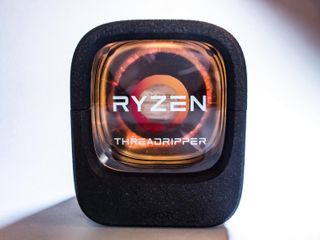
In case you had any doubt, this is a premium product. AMD outdoes Intel's packaging with a custom closed-cell foam design that includes a torque wrench. Head over to our unboxing coverage to see the Threadripper packaging in all its glory.
But we're here for performance testing. Let's see if Threadripper lives up to the hype.
MORE: Best CPUs
MORE: Intel & AMD Processor CPU Benchmarks Hierarchy
MORE: All CPUs Content
Current page: Threadripper Makes An Entrance
Next Page Game Modes & Architecture, Infinity Fabric Latency Testing
Paul Alcorn is the Managing Editor: News and Emerging Tech for Tom's Hardware US. He also writes news and reviews on CPUs, storage, and enterprise hardware.
-
I just looked at gaming benchmark and stopped reading there because as i thought Intel CPUs are killing Thread Ripper in gaming. As far as content creation, naturally having 16/32 setup will be faster than Intel 10/20 but again do you really need more than 10/20 cores. I don't and i heavily use PC for gaming, programming, web design, video/audio encoding. Overall Intel 7900x is better value and all around CPU. But if you are just in gaming 7700k is just enough.Reply
Thanks for review, and hello x299 platform.
Gaming vs. Content Creation mode through Software is just another big NO NO to me knowing how crappy AMD software is. I assume the most people will keep it in Game Mode and leave it as it is.
I appreciate that AMD brought this CPU for $999 with so many cores, helps competition but again there is nothing to drool over here in my book. AMD didn't bring any significant performance bump core vs. core basis. In fact AMD single core performance still sucks which means when Intel releases 10+ core CPU it is going to fun to watch.
Two things i am interested the most is Coffee Lake product and IPC improvement there and possible price adjustment with Core i9.
-
Kai Dowin I'm truly impressed to see 16 Zen cores consuming as much power as only 10 Skylake-X ones. Bravo, AMD!Reply -
Reply20045233 said:I'm truly impressed to see 16 Zen cores consuming as much power as only 10 Skylake-X ones. Bravo, AMD!
I am not knowing that Intel is running higher frequency.
-
JamesSneed Reply20045197 said:I just looked at gaming benchmark and stopped reading there because as i thought Intel CPUs are killing Thread Ripper in gaming. As far as content creation, naturally having 16/32 setup will be faster than Intel 10/20 but again do you really need more than 10/20 cores. I don't and i heavily use PC for gaming, programming, web design, video/audio encoding. Overall Intel 7900x is better value and all around CPU. But if you are just in gaming 7700k is just enough.
Thanks for review, and hello x299 platform.
Gaming vs. Content Creation mode through Software is just another big NO NO to me knowing how crappy AMD software is.
I love Intel even more...all you have to do pop CPU in and shit works and it works well.
I guess if gaming is why you were reading the Threadripper review then you are right it isn't as good as Intel's offerings but did you honestly expect any other result? I don't know why reviewers even do gaming tests on any CPU over 8 cores as it is mostly pointless. If you are doing scientific, encoding, professional tasks in just about every use case that is multi threaded it is blowing away every Intel offering. Of course that may change once there are 12-18 core Intel parts. However spending $1000 for a CPU is a bargain for those than can use it and never in history could you get a 16 core consumer part with this type of multi-threaded performance.
-
Lyden Thank you for this review. I was seriously considering Threadripper. Looks like the 7700k is still the sensible choice for the price when gaming.Reply -
Kai Dowin @FREAK777POWER And delivering higher multi-threaded performance with these lower clocked cores. Do you know what that's called? Efficiency.Reply -
redgarl This chip is designed for heavy calculation multithreading, it is not made for gaming, however it is working well with 1440p and 2160p.Reply
By the way, who in their mind will buy a 16 core CPU and play at 1080p with a 1080 TI... seriously, these 1080p bench are a joke and don't represent reality...
"A standard or point of reference against which things may be compared." Oxford
1080p with 1080 TI with a 16 core processor is not a point of reference at all. -
Pompompaihn Who are you people that come here and <ModEdit> about gaming performance on these chips??Reply
Threadripper is the F250 of CPUs. It's not the fastest, but it's plenty fast for 99% of your tasks, and if you need to haul a 12,000 pound trailer it'll do that, too. This is for people who do a lot of WORK on their machine but also game on the side.
<Moderator Warning: Watch your language in these forums>
